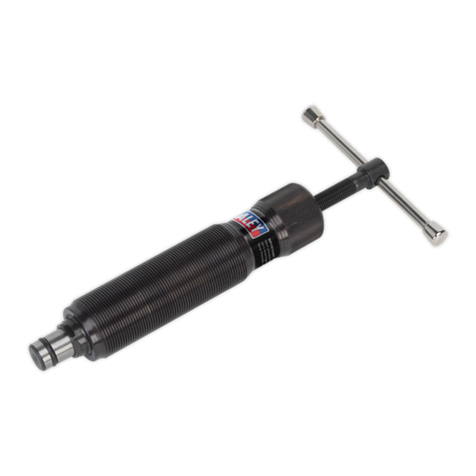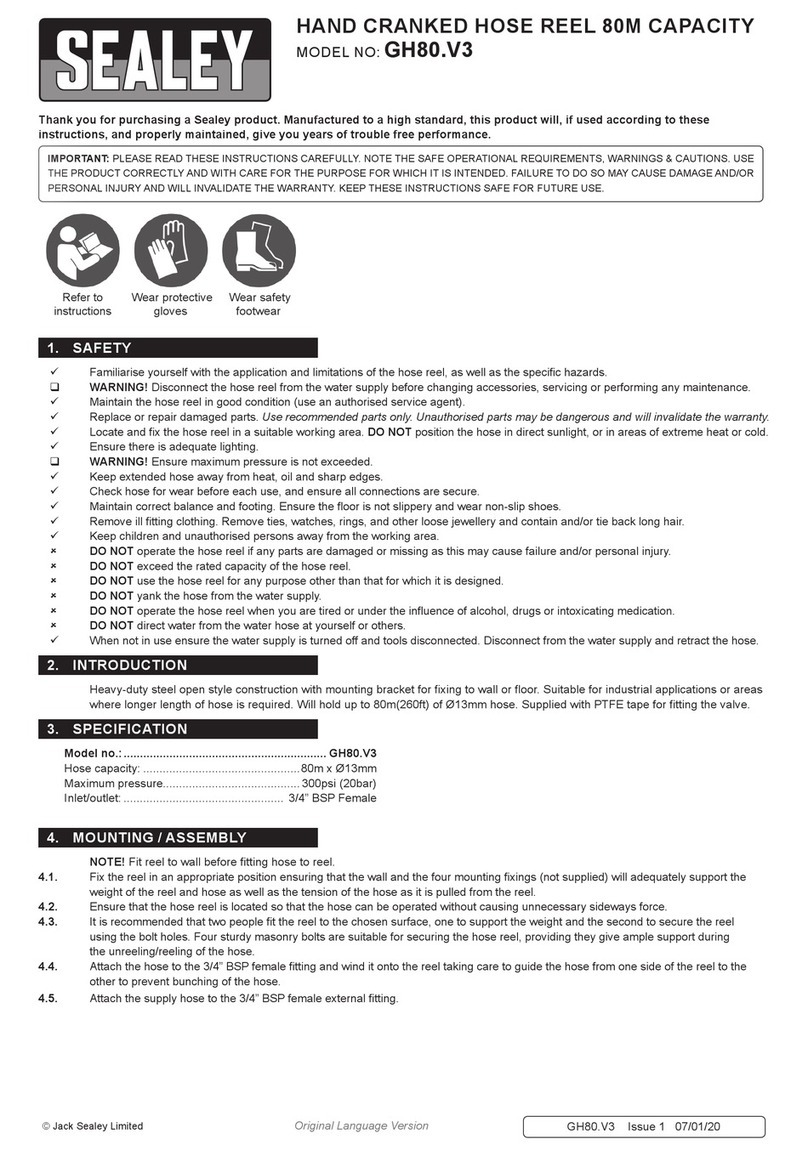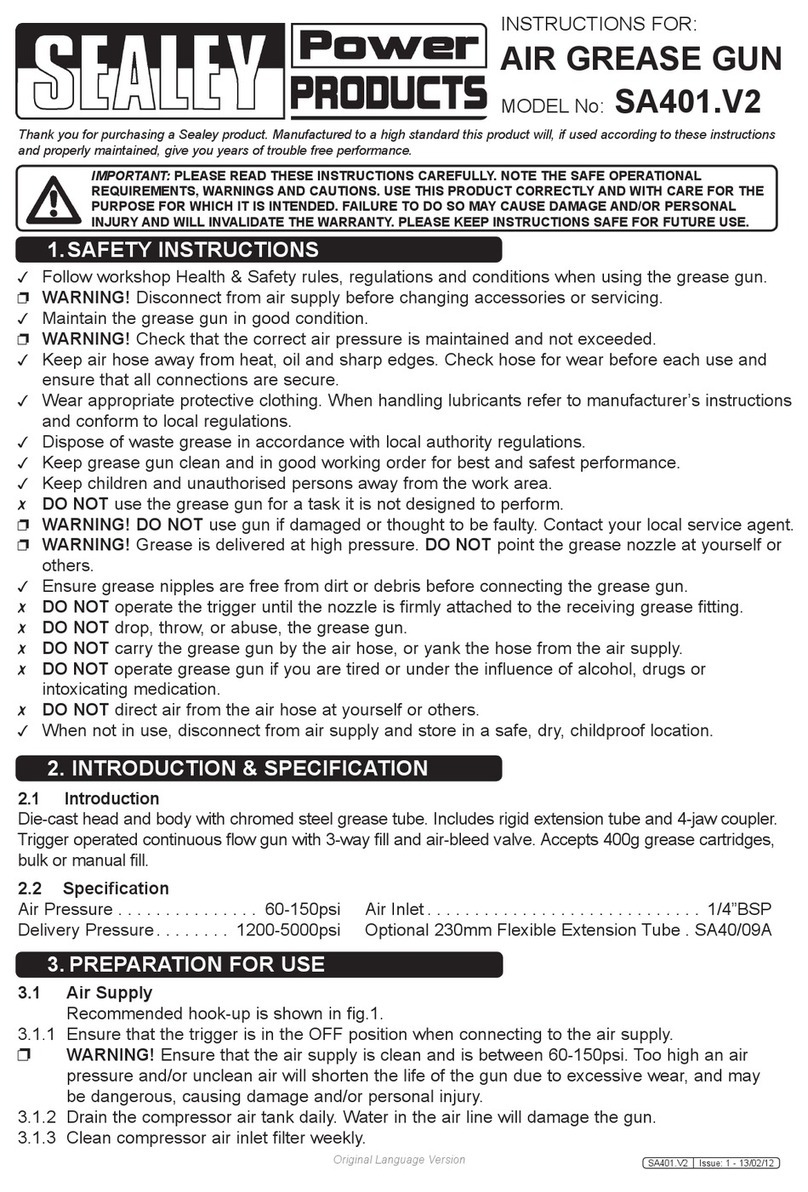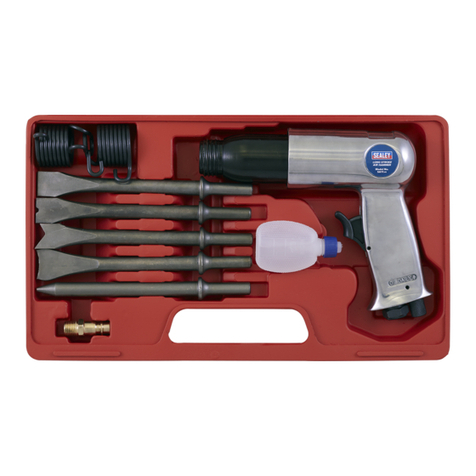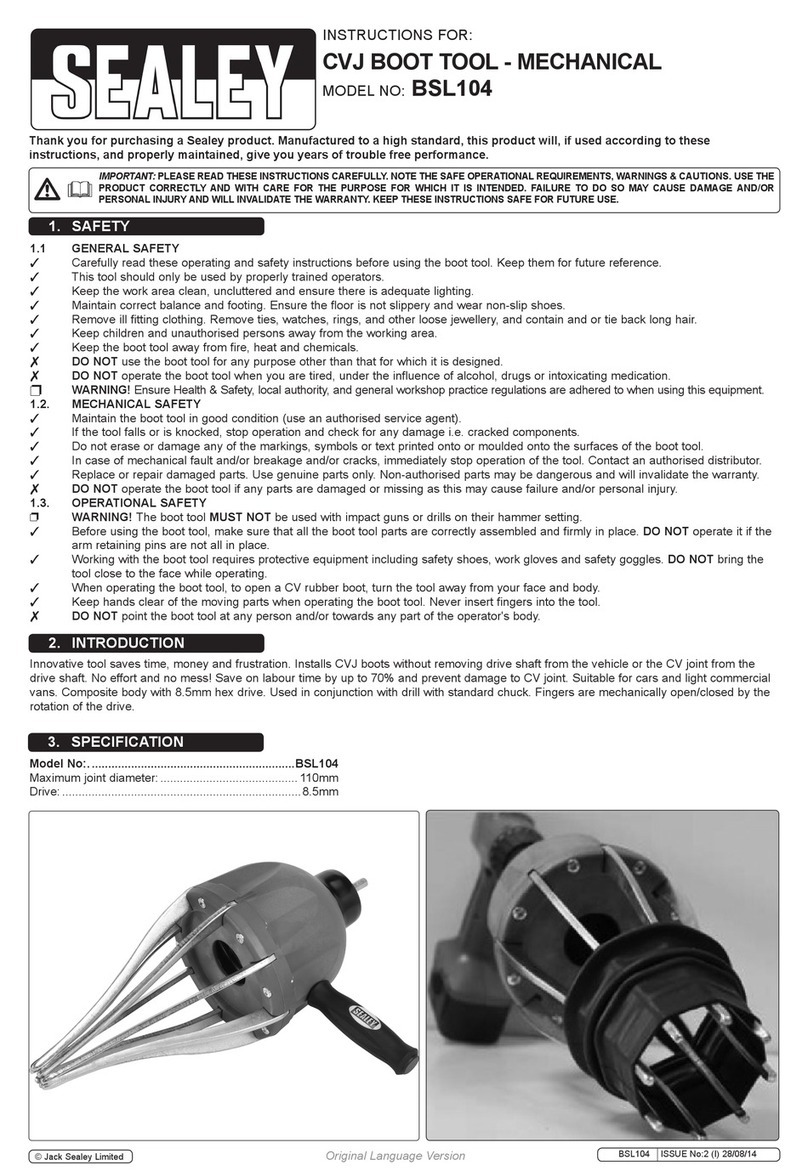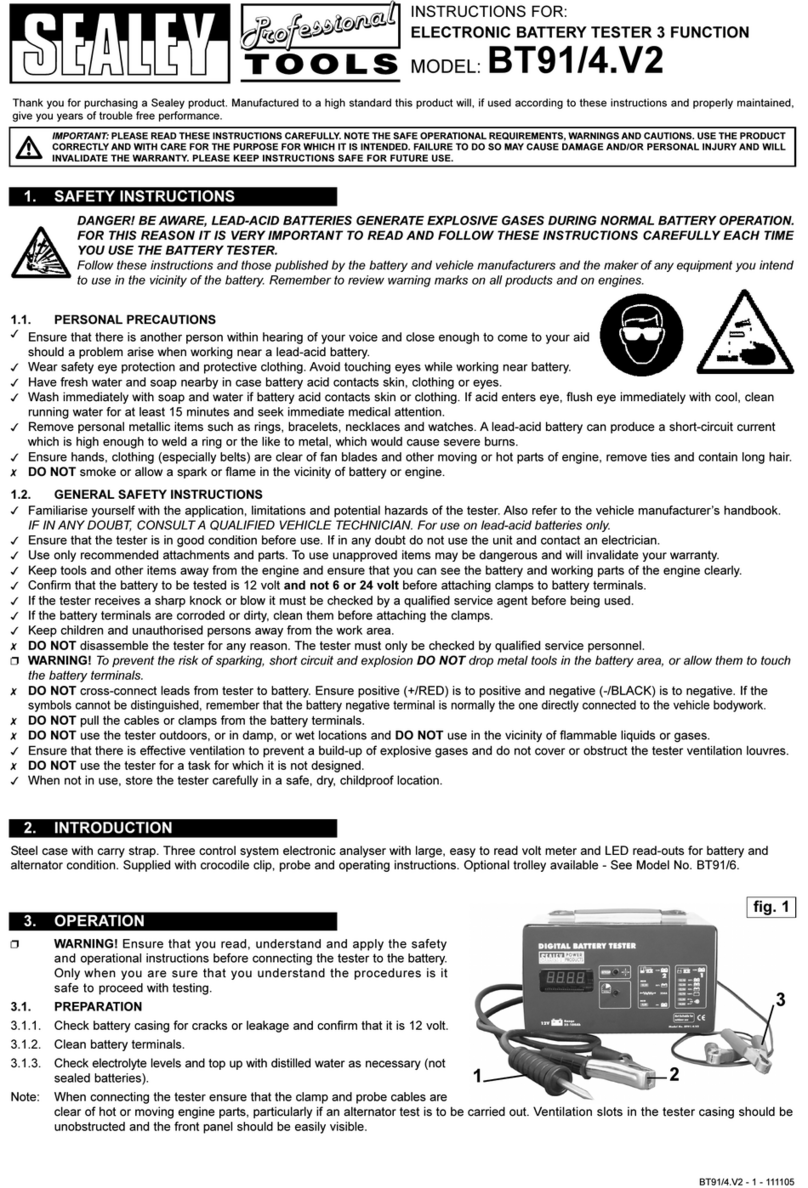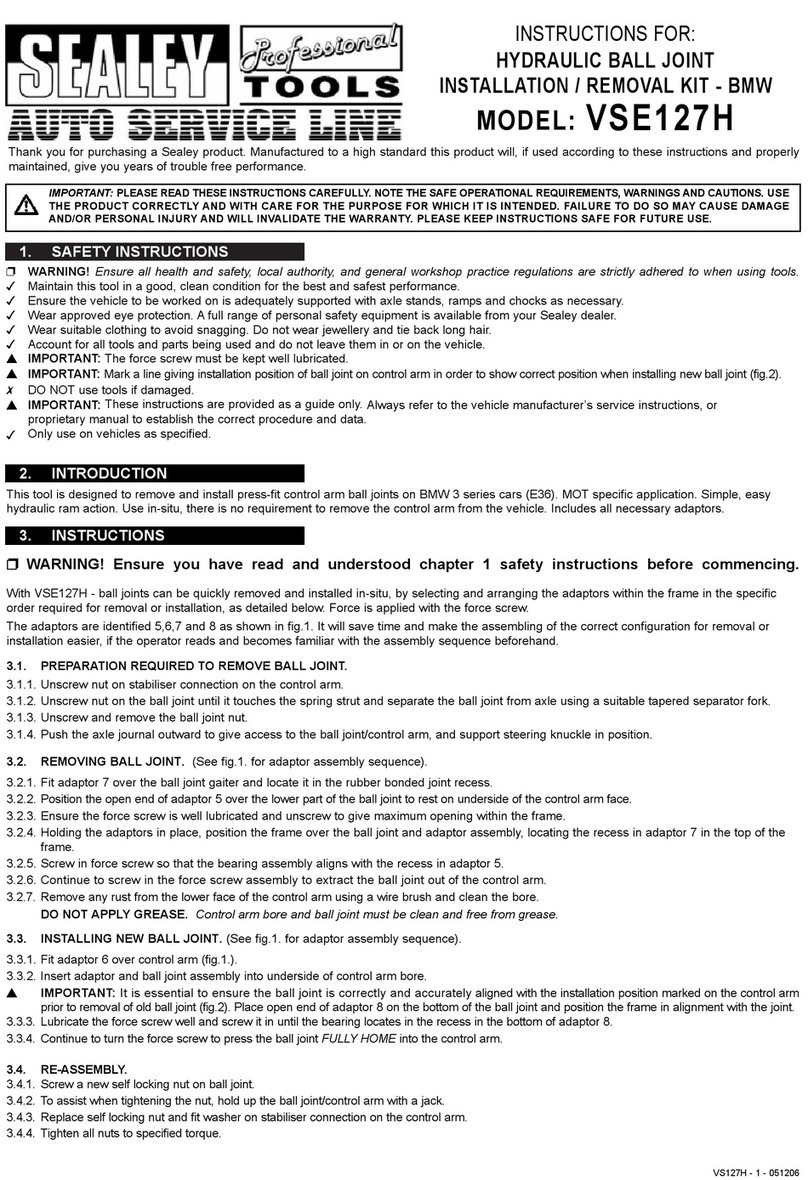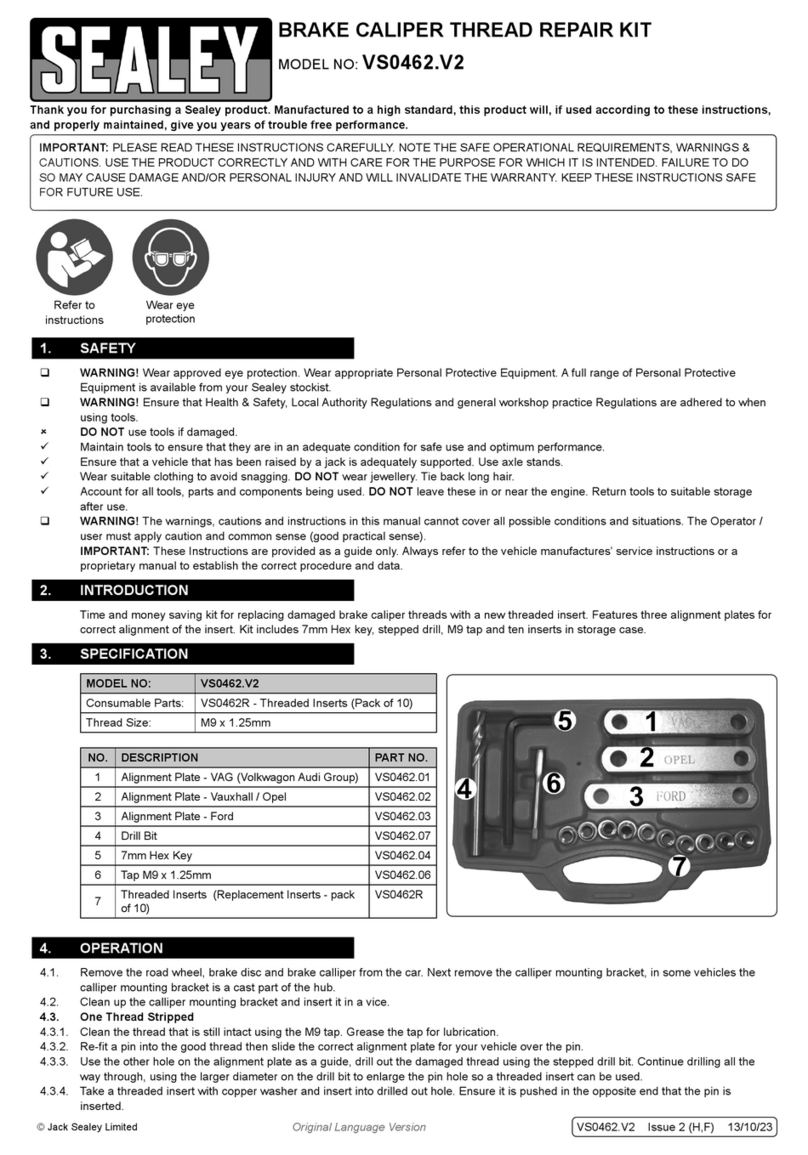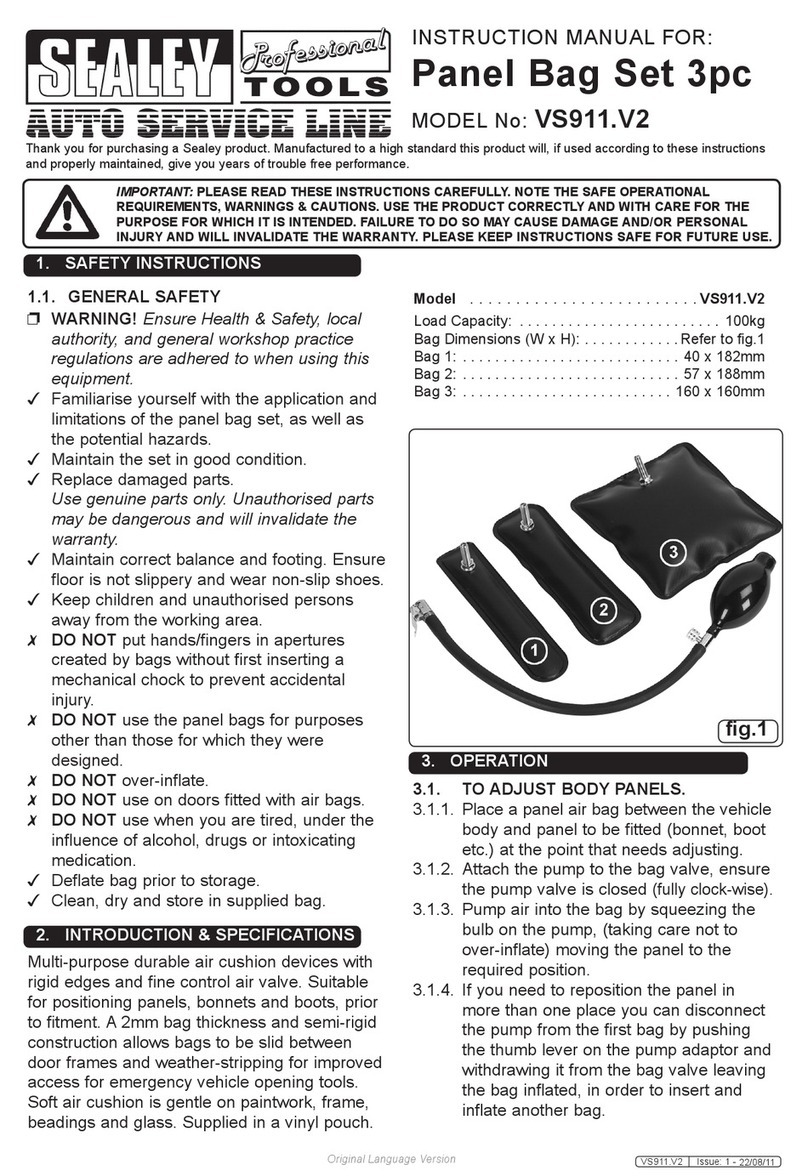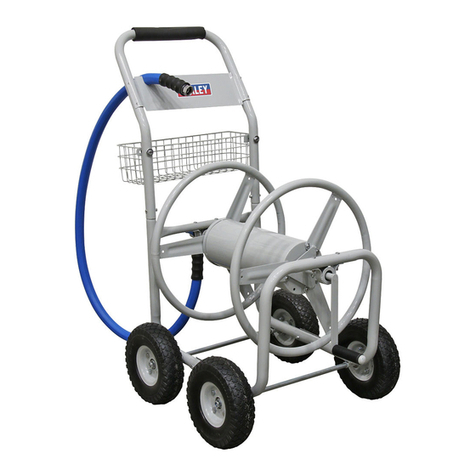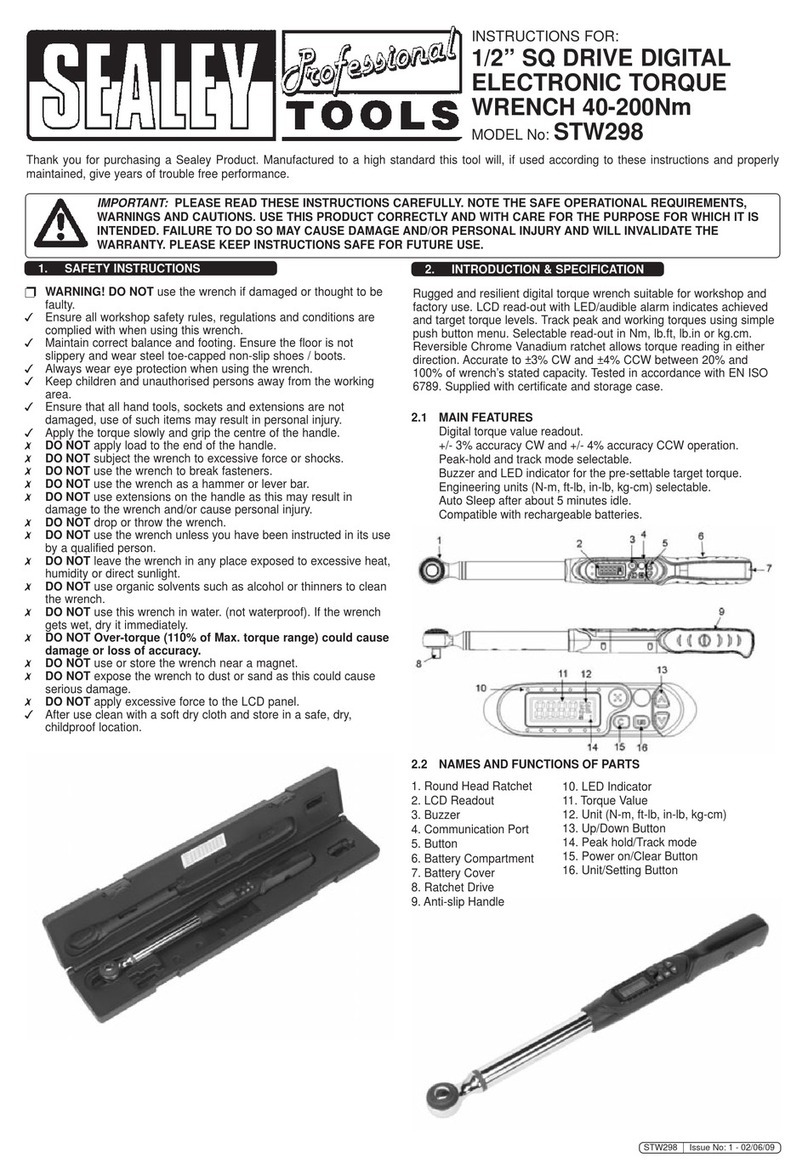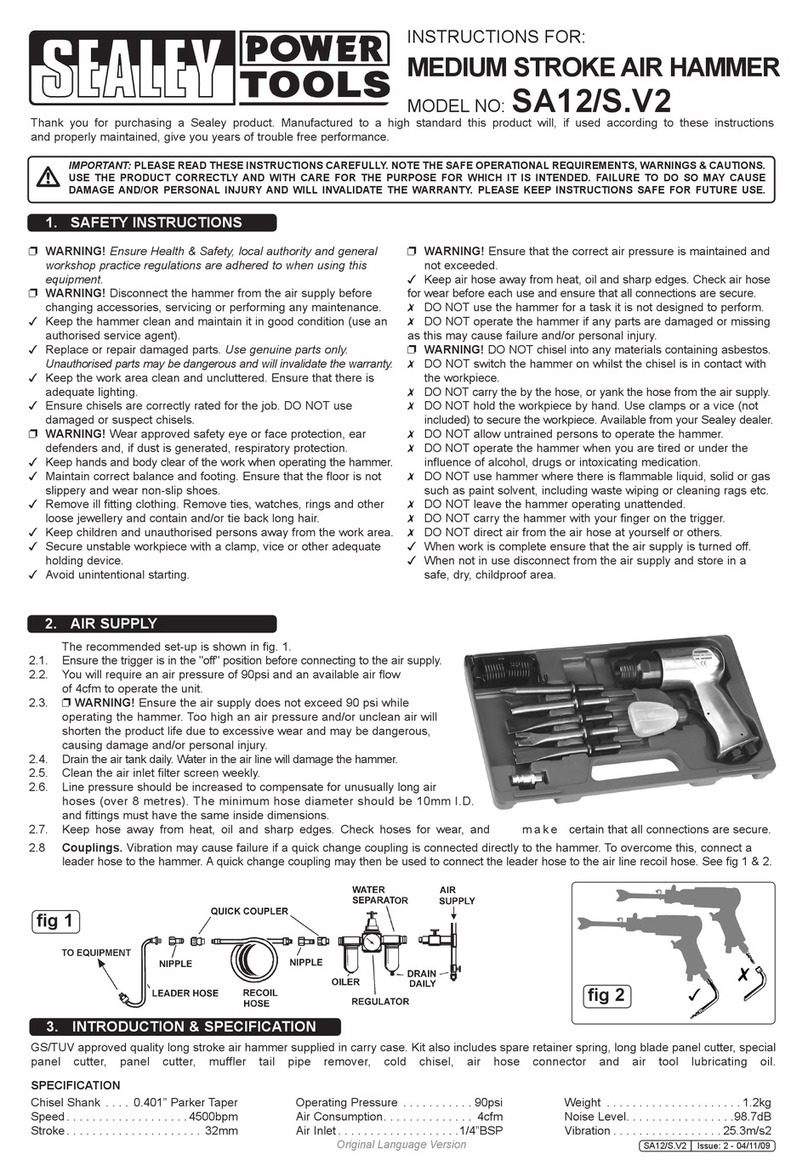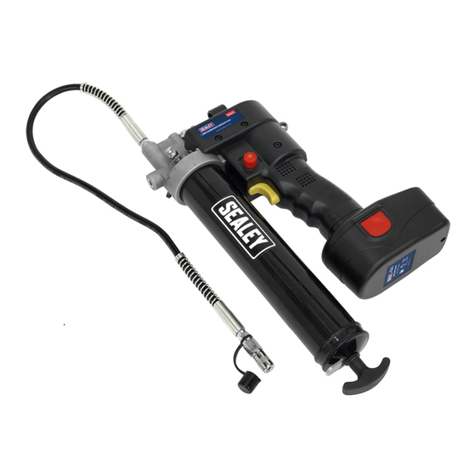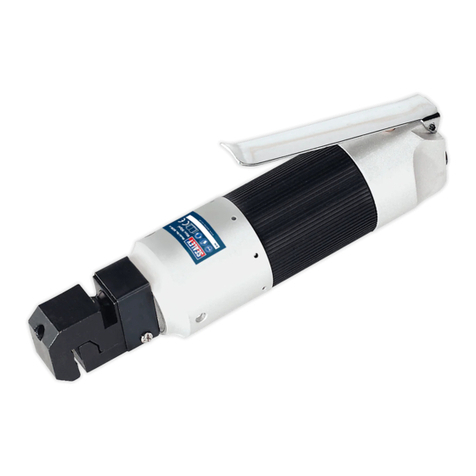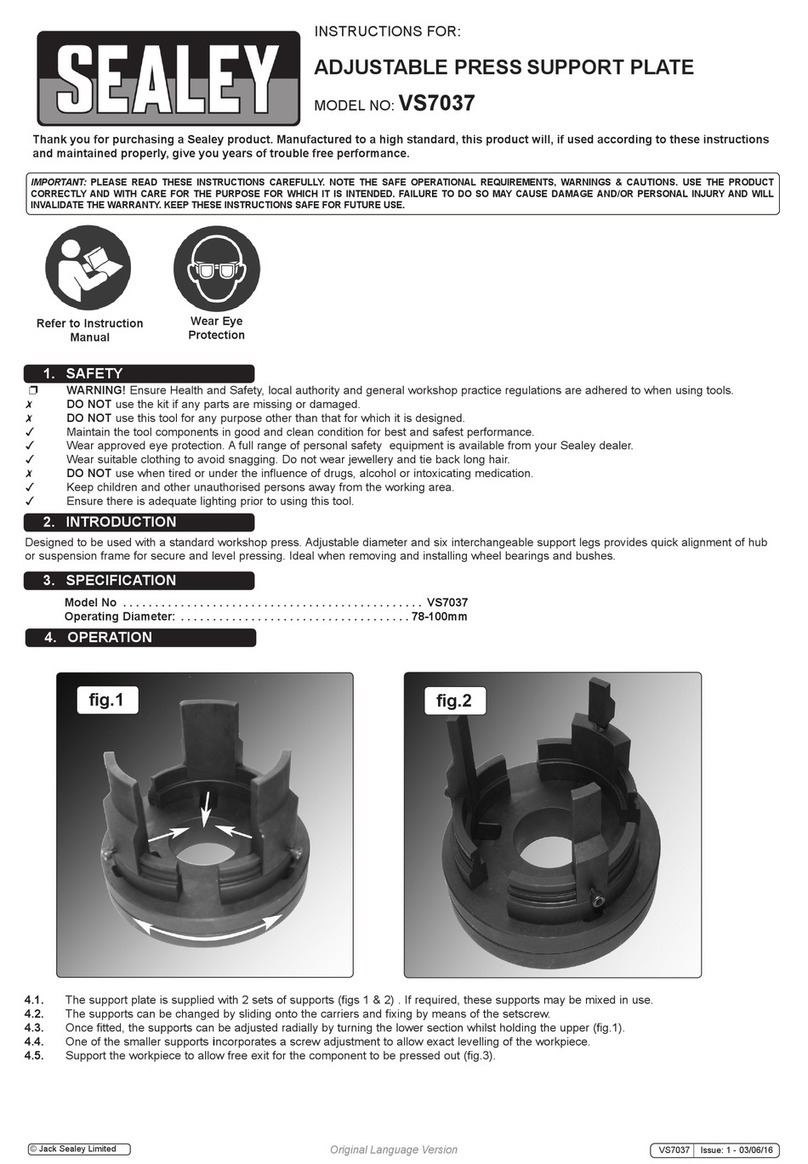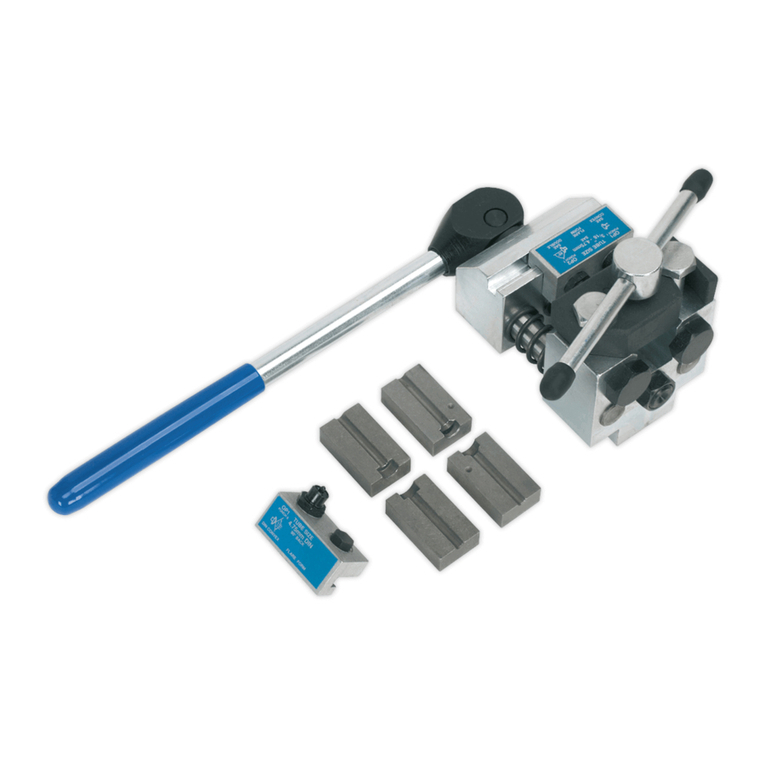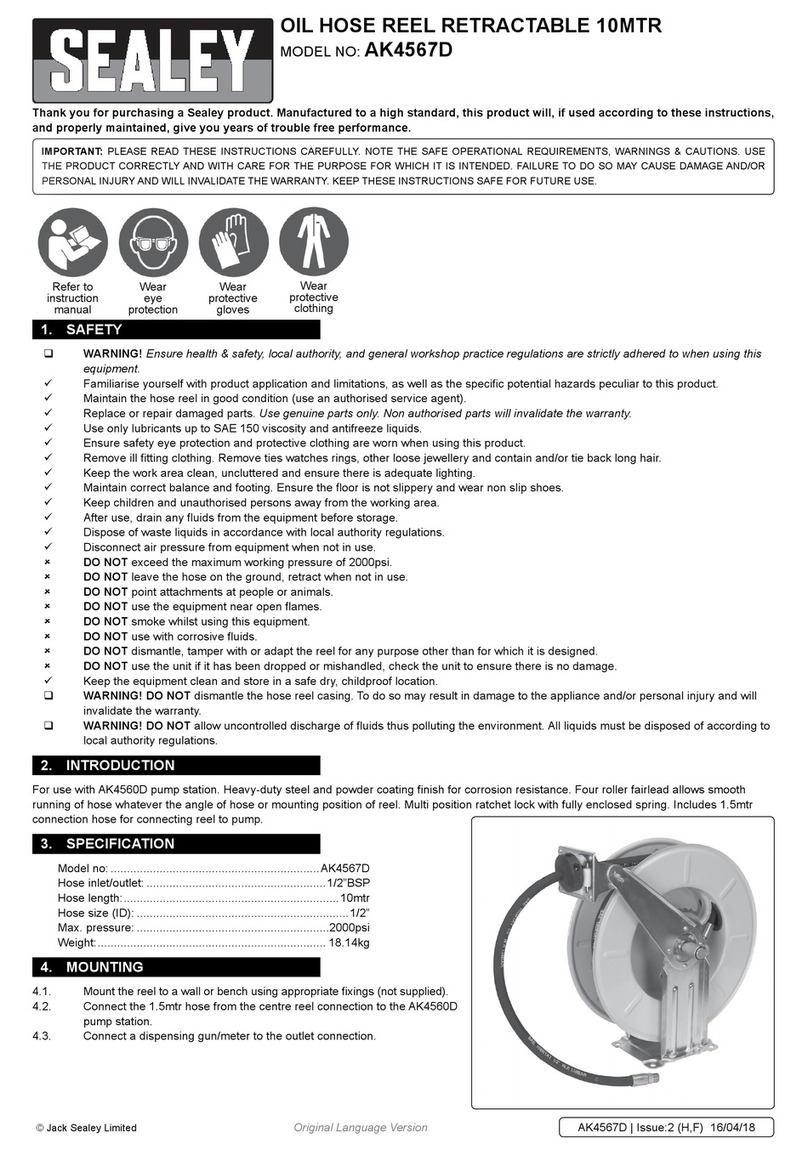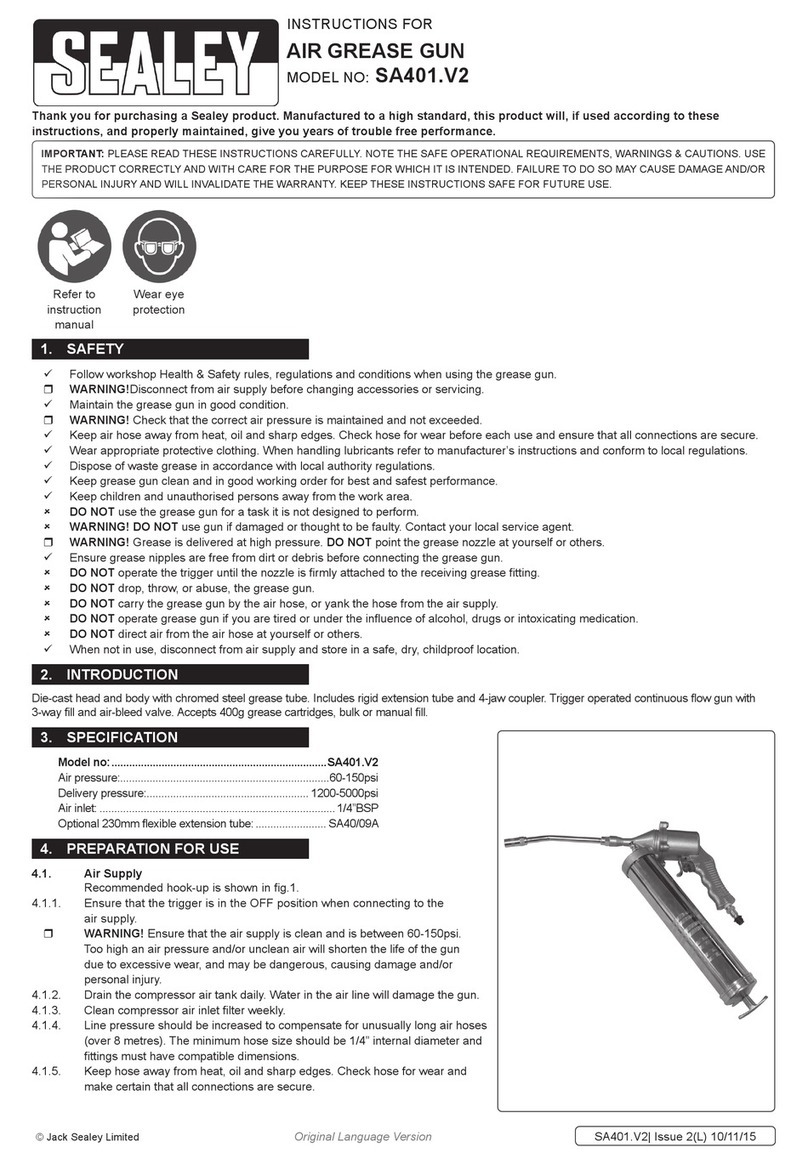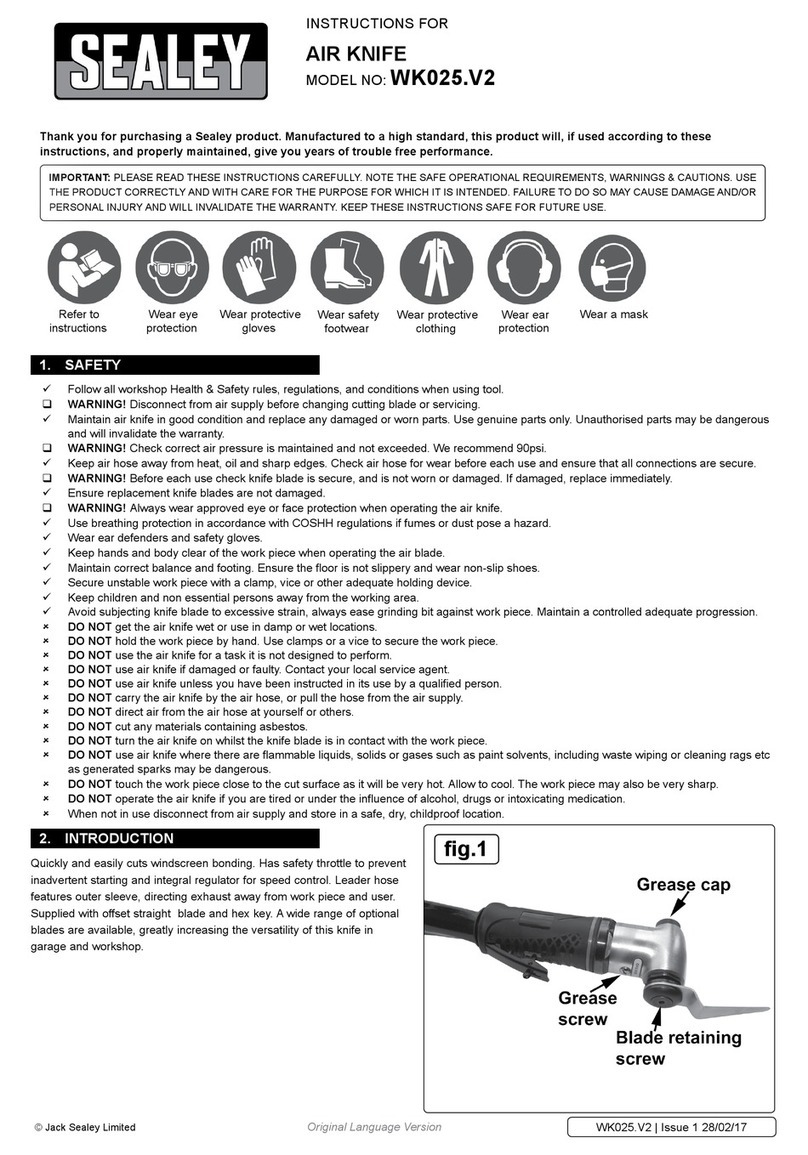
4. OPERATION
4.1. Before rst use.
4.1.1. Before using jack, purge hydraulic unit in order to eliminate
any air in the system. Place handle onto the release valve nut
as shown in fig.2 and open the valve by turning the handle
anti-clockwise, place the handle back into the jacking socket
and pump for 30 to 40 seconds. See fig.1. When complete,
close the release valve by turning the valve nut clockwise.
Place a few drops of hydraulic jack oil onto the pump piston
and pump the handle several times to distribute the oil.
Thoroughly lubricate all moving parts.
4.2. General jacking.
WARNING! Before lifting ensure Section 1 safety instructions
are read and understood.
4.2.1. Prepare the vehicle as mentioned in the safety instructions
ensuring the ground on which the jack is to stand is level
and solid (not tarmacadam).
4.2.2. Position the jack saddle under the vehicle manufacturer’s
recommended lifting point.
4.3. Jacking the vehicle.
4.3.1. Close the release valve using the handle as shown in fig.2.
Place the handle into the handle socket and commence pumping
handle up and down using maximum strokes until vehicle.
4.3.2. Should the jack become overloaded, a safety excess pressure
valve will open, and stop the vehicle from lifting.
WARNING! The jack is a lifting device only and must not be
used to support the load. Use correctly rated axle stands to
support the load.
4.3.3. When lifting a load at the jack’s maximum rating (2tonne) or
close to it, it is recommended that the effort of raising the
load be reduced by the use of assistance during the operation.
4.4. Lowering the vehicle
WARNING! Ensure there are no persons or obstacles beneath the
vehicle, or in the path of its descent.
4.4.1. If using axle stands, raise the jack high enough for the stands to
be easily removed. Then place the handle onto the release valve nut
and turn anti-clockwise, very slowly, to open the valve.
4.4.2. The lowering speed is controlled by the amount you turn the handle.
Lower carefully, avoid any sudden changes in descent rate which
would shock load the hydraulic system.
5. MAINTENANCE
5.1. When the jack is not in use, the ram should be in its lowest position to minimise corrosion. Remove the handle to inactivate jack.
5.2. Keep the jack clean and lubricate all moving parts on a regular basis.
5.3. Before each use check for broken, cracked, bent, or loose parts, or any visible damage to ram, pump, saddle, lifting arm, frame and
all parts including nuts, bolts, pins and other fasteners. If any suspect item is found remove jack from service and take necessary
action to remedy the problem.
8DO NOT use the jack if believed to have been subjected to abnormal load or shock load.
5.4. Periodically check the pump piston and the ram for signs of corrosion. Clean exposed areas with a clean oiled cloth.
5.5. After one year the oil should be replaced in order to extend the life of the jack. Use hydraulic jack oil only.
9IMPORTANT: Only fully qualified personnel should attempt hydraulic maintenance or repair.
5.6. To check the oil level, fully lower the jack. Remove the two bolts that hold the black cover in place and prise out the cover from
between the side walls of the jack. Remove oil filler plug (fig.3). The correct level is just below the bottom of the plug. If oil level is low,
fill as required. Replace cover. NOTE: Use a good quality jack oil, such as SEALEY HYDRAULIC JACK OIL.
WARNING! DO NOT use brake fluid, or any fluid other than hydraulic jack oil as this may cause serious damage to the jack and will
invalidate the warranty.
5.7. When draining the oil make sure that no dirt is allowed to enter the hydraulic system.
9IMPORTANT: NO RESPONSIBILITY IS ACCEPTED FOR INCORRECT USE OF THIS PRODUCT.
Hydraulic products are only repaired by local service agents. We have service/repair agents in all parts of the UK.
DO NOT return jacks to us. Please telephone us on 01284 757500 to obtain the address and ‘phone number of your local agent. If
jack is under guarantee contact your local Sealey dealer.
De-commissioning the Jack. Should the jack become completely unserviceable and require disposal, draw off the oil into an
approved container and dispose of the jack and the oil according to local regulations.
1020LE | Issue 3 25/08/16
Original Language Version
© Jack Sealey Limited
fig.1
fig.2
